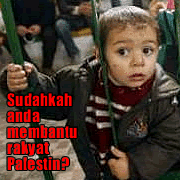
Mecca, also spelled Makkah IPA: [ˈmækə], Arabic: مكة Makka (in full: Makka al-Mukarrama IPA: [(Arabic) mækːæ(t) ælmʊkarˑamæ]; Arabic: مكّة المكرمة, literally: Honored Mecca) is a city in Saudi Arabia. Home to the Masjid al-Haram, it is the holiest city in Islam and plays an important role in the faith. As of 2008 the annual Hajj pilgrimage attracts two to three million pilgrims to the city,[1][2] and presents both opportunities for the city's economy, and challenges for its infrastructure. Culturally, the city is modern, cosmopolitan and ethnically diverse.[3][4][5][6]
Islamic tradition attributes the beginning of Mecca to Ishmael's descendants. In the 7th century, the Islamic prophet Muhammad proclaimed Islam in the city, by then an important trading center, and the city played an important role in the early history of Islam. After 966, Mecca was led by local sharifs, until 1924, when it came under the rule of the Saudis.[7] In its modern period, Mecca has seen a great expansion in size and infrastructure.
The modern day city is located in and is the capital of Saudi Arabia's Makkah Province, in the historic Hejaz region. With a population of 1.7 million (2008), the city is located 73 km (45 mi) inland from Jeddah, in a narrow valley, and 277 m (910 ft) above sea level.
History
Early history
According to Islamic tradition, the history of Mecca goes back to Ibrahim (ابراهيم, Abraham) when he built the Kaaba with the help of his son Ismā'īl (اسماعيل, Ishmael), around 2000 BC. The inhabitants were stated to have fallen away from monotheism through the influence of the Amelkites.[16] Historians state that the Kaaba later became the repository of 360 idols and tribal gods of all of Arabia's nomadic tribes. Until the 7th century, Mecca's most important god would remain to be Hubal, having been placed there by the ruling Quraysh tribe.[17][18]
Ptolemy may have called the city "Macoraba", though this identification is controversial.[19] In the 5th century, the Quraysh took control of Mecca, and became skilled merchants and traders. In the 6th century they joined the lucrative spice trade as well, since battles in other parts of the world were causing trade routes to divert from the dangerous sea routes to the relatively more secure overland routes. The Byzantine Empire had previously controlled the Red Sea, but piracy had been on the increase. Another previous route, that from the Persian Gulf via the Tigris and Euphrates rivers, was also being threatened by exploitation from the Sassanid Empire, as well as being disrupted by the Lakhmids, the Ghassanids, and the Roman–Persian Wars. Mecca's prominence as a trading center surpassed the cities of Petra and Palmyra.[20][21]
By the middle of the 6th century, there were three major settlements in northern Arabia, all along the southwestern coast that borders the Red Sea, in a habitable region between the sea and the great desert to the east. This area, known as the Hejaz, featured three settlements grown around oases, where water was available. In the center of the Hejaz was Yathrib, later renamed as Medina. 250 mi (400 km) south of Yathrib was the mountain city Ta’if, northwest of which lay Mecca. Though the area around Mecca was completely barren, Mecca was the wealthiest and most important of the three settlements. Islamic histories state that it had abundant water via the Zamzam Well, which was the site of the holiest shrine in Arabia, the Kaaba, and was also at the crossroads of major caravan routes.[22]. Actually the well of Zamzam was barely sufficient to support the small community there, the Kaaba was but one of many such Arabian Polytheistic temple found in the peninsula, and the city was the terminus for a single caravan route which ran from Mecca to Syria.[23]
The harsh conditions of the Arabian peninsula usually meant a constant state of conflict between the tribes, but once a year they would declare a truce and converge upon Mecca in an annual pilgrimage. This journey was intended for religious reasons, to pay homage to the shrine, and to drink from the Well of Zamzam. However, it was also the time each year that disputes would be arbitrated, debts would be resolved, and trading would occur at Meccan fairs. These annual events gave the tribes a sense of common identity and made Mecca extremely important throughout the peninsula.[24]
Muhammad's great-grandfather had been the first to equip a camel caravan, and they became a regular part of the town's economy. Alliances were struck between the merchants in Mecca, and the local nomadic tribes, who would bring leather, livestock, and metals which were mined in the local mountains. Caravans would then be loaded up in Mecca, and would take the goods to the cities in Syria and Iraq.[25] Islamic tradition claims that goods from other continents also flowed through Mecca. From Africa and the Far East towards Syria supposedly flowed spices, leather, drugs, cloth, and slaves; and in return Mecca was to have received money, weapons, cereals, and wine, which were distributed throughout Arabia. The Meccans signed treaties with both the Byzantines and the Bedouins, and negotiated safe passage for caravans, which included such things as water and pasture rights. These further increased Mecca's political power as well as economic, and Mecca became the center of a loose confederation of client tribes, which included those of the Banu Tamim. Other forces such as the Abyssinian, Ghassan, and Lakhm were in decline, and Meccan influence was the primary binding force in Arabia in the late 6th century.






0 comments:
Post a Comment